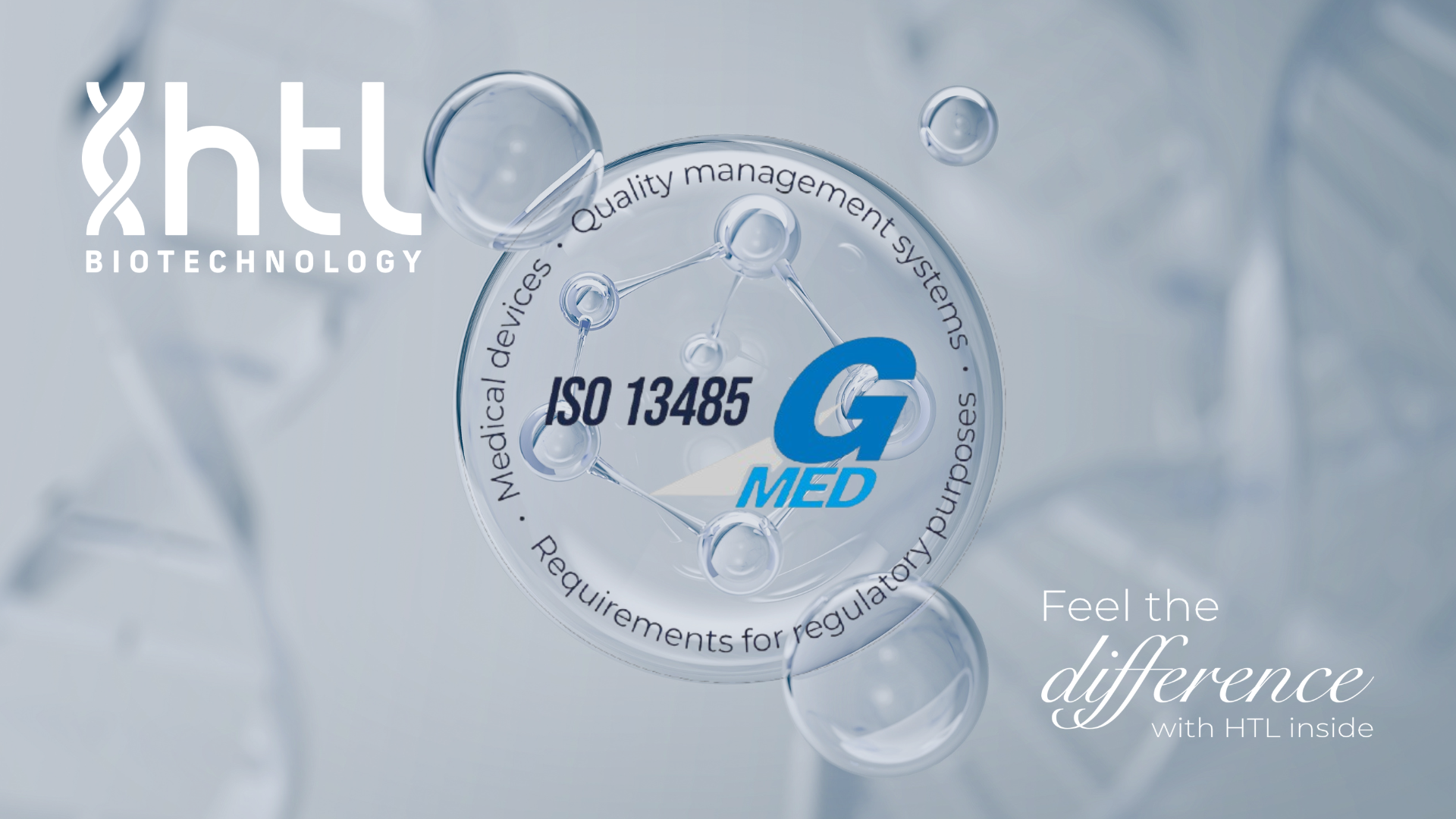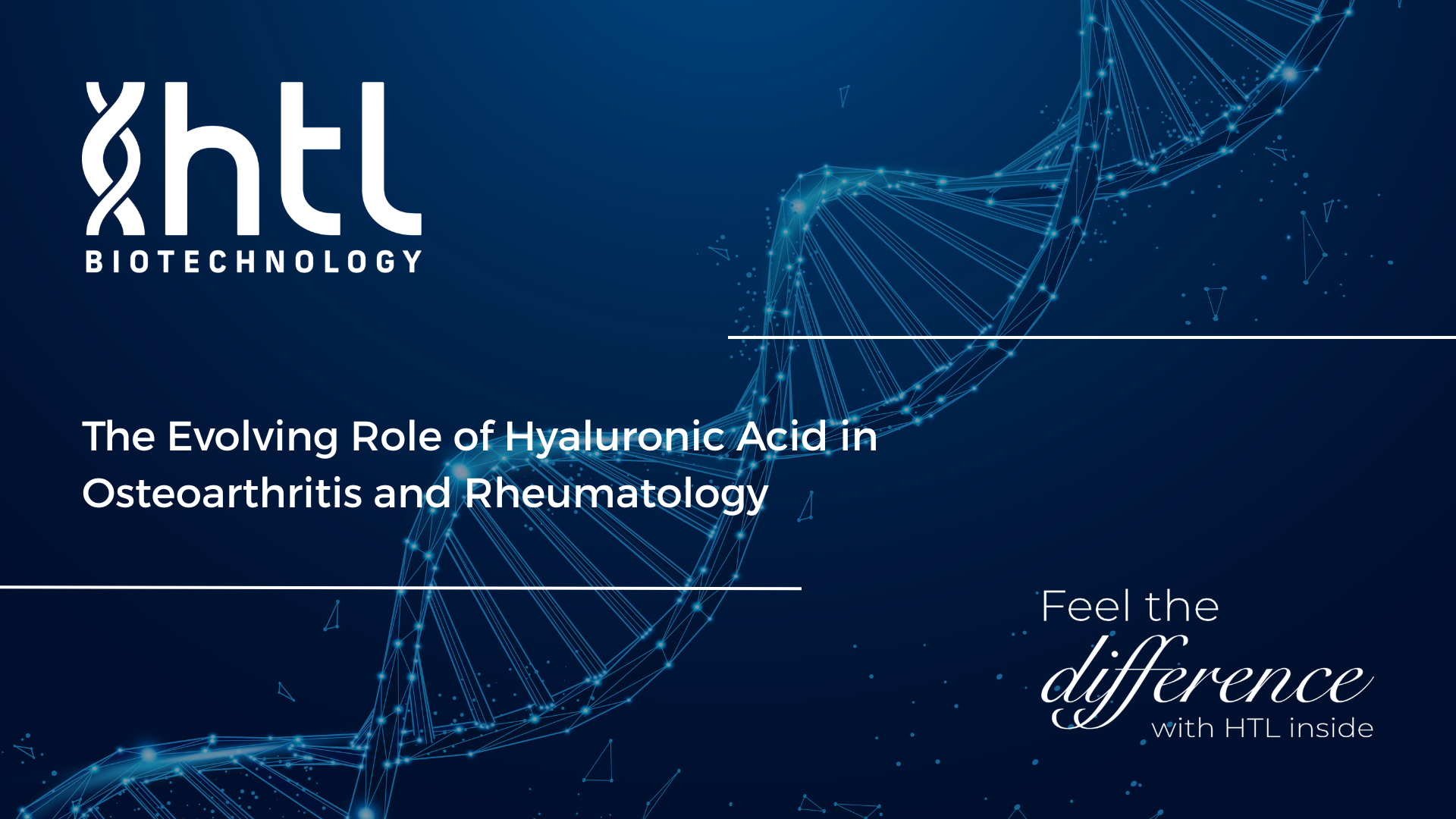HTL Biotechnology inaugurates a new production line dedicated to sterile Hyaluronic Acid
As part of National Biomanufacturing Day 2025, HTL Biotechnology inaugurates a new production line dedicated to Hyaluronic Acid.
Our industrial site in Javené, Brittany, covers 64,000 m² and hosts four independent production units, supported by state-of-the-art R&D and quality control laboratories. Two units are dedicated to hyaluronic acid and two to polynucleotides, ensuring flexibility and maximum security of supply.
Industrial performance at HTL is measured not only in output, but also in impact. We design our operations to meet the most demanding pharmaceutical standards while embedding CSR commitments into daily practice, optimising processes, controlling emissions, and reducing resource use. This dual focus guarantees both reliability for our partners and Social Responsability.
Between 2021 and 2024, we’ve reduced Scope 1 and 2 greenhouse gas emissions per kilogram of hyaluronic acid by 27%, surpassing our 25% target. Over the same period, water consumption per kilogram of HA decreased by 34%.
These achievements are the result of continuous investment: new distillation columns that are 40% more energy-efficient, closed-circuit cooling systems, and eco-designed solutions such as bio-sourced oyster shell coatings on our buildings. All of this reflects our commitment to combining industrial innovation with sustainability.
Responsibility is a collective effort. All employees are trained in our ISO 14001-certified environmental management system, ensuring that continuous improvement is part of our culture. Beyond our walls, 97% of critical suppliers have signed our Sustainable Purchasing Charter, and 78% are actively committed to environmental initiatives. By aligning partners with our standards, we ensure sustainability at every stage, from raw material sourcing to product delivery.
We are focused on further reducing emissions and resource consumption. By 2028, we aim to halve volatile organic compound emissions. At the same time, we remain committed to reducing our water consumption and to our eco-design practices. These objectives reflect a long-term vision: industrial excellence that supports competitiveness, quality, and environmental responsibility.
Our CSR policy guides our decisions and is the foundation of how we operate. From optimizing cleaning parameters to investing in new production units, sustainability guides every step of our industrial model. Industrial performance at HTL is therefore defined by two dimensions: uncompromising pharmaceutical quality and a measurable reduction of our environmental footprint. This dual commitment ensures that our partners can grow with confidence, supported by a reliable and sustainable industrial platform.




Osteoarthritis is a degenerative joint disorder, often leading to chronic pain and reduced mobility as cartilage deteriorates over time.
Due to its viscoelastic properties, Hyaluronic acid (HA), a naturally occurring molecule in the body and a major component of the extracellular matrix, is an ideal candidate for addressing these degenerative processes of joint diseases. Recognized for its lubricating properties, HA is also shaping the management of osteoarthritis and rheumatologic diseases through its multi-faceted therapeutic potential.